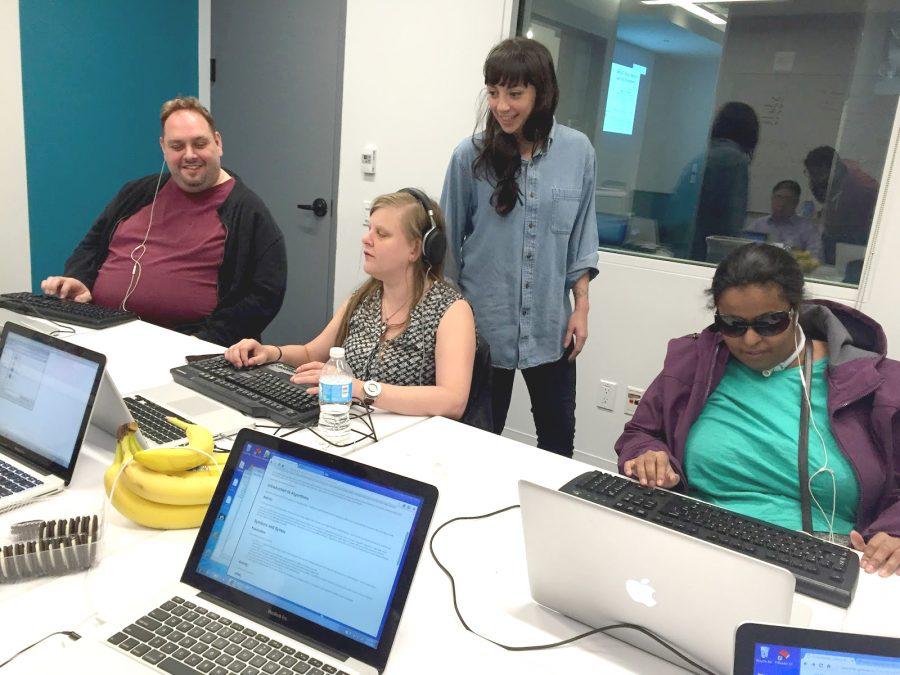Accessibility in coding
Kearney-Volpe has teamed up with Chancey Fleet — who is blind — and the Processing Foundation to modify R5 coding and improve its accessibility for visually impaired and blind individuals. While Kearny-Volpe and Fleet are keen to point out that there have been blind people who have built successful careers in coding, there are very few tools available to help them learn. Most people in the blind community use screen readers or devices that turn on-screen information into braille. However, because a lot of both coding and coding instructions are highly visual, Kearny-Volpe and Fleet are focusing on ways to get that information across using non-visual means. A big part of their research and development is meeting and workshopping with members of the blind community, or as they call them, “expert stakeholders.”

Claire Kearney-Volpe watches over three participants in her web development workshop for the visually impaired. In this study, she monitors the use of screenreaders to create P5.js sketches. (Courtesy of The Processing Foundation)
Sound Canvas (2018)
Sound Canvas, made in partnership with Google’s creativity lab, is a drawing tool with a twist. As you move the cursor around the screen, it produces a tone that changes the pitch as you go higher or lower on the screen, while side to side movement changes where the sound seems to emanate from, producing a Doppler-like effect. While you probably couldn’t paint the next Mona Lisa on it, or be the next Vivaldi, it is surprisingly addictive. Its real potential, though, is redefining accessibility. With the requisite technology, the program can track a body part — like a finger or nose — and users can draw with that. So even people who are unable to use a keyboard or mouse are able to make some musical doodles.

Sound Canvas allows blind or visually impaired users to draw images by emitting sound as their mouse moves along a computerized canvas. Images can be drawn with either keyboard commands or body movements tracked by a computer webcam. (Courtesy of Claire Kerney-Volpe)
NYU Ability Project (2013)
Claire Kearney-Volpe and a team of undergrads collaborated with The NYU Ability Project, which has partnered up with the New York City government and several private companies to come up with accessible tech, teaching methods and programs focused on the disabled community. Some projects include collaborating with Lavelle School for the Blind on accessible music-making methods. With the Cooper Hewitt Museum, they improved the accessibility of both the museum itself and its website. They have also worked with both AT&T and Spectrum on accessible tech interfaces.

From left to right: Student’s process documentation for the Ability Project and Cooper Hewitt Co-Lab course; Students’ wireframes of an accessibility toolkit—an online tutorial to inform exhibition design; Accessible musical interface designed with feedback from students at the Lavelle School for the Blind. Claire worked as a Adjunct Professor for the Ability Project leading this research. (Courtesy of Cooper Hewitt)
I am text block. Click edit button to change this text. Lorem ipsum dolor sit amet, consectetur adipiscing elit. Ut elit tellus, luctus nec ullamcorper mattis, pulvinar dapibus leo.























































































































































